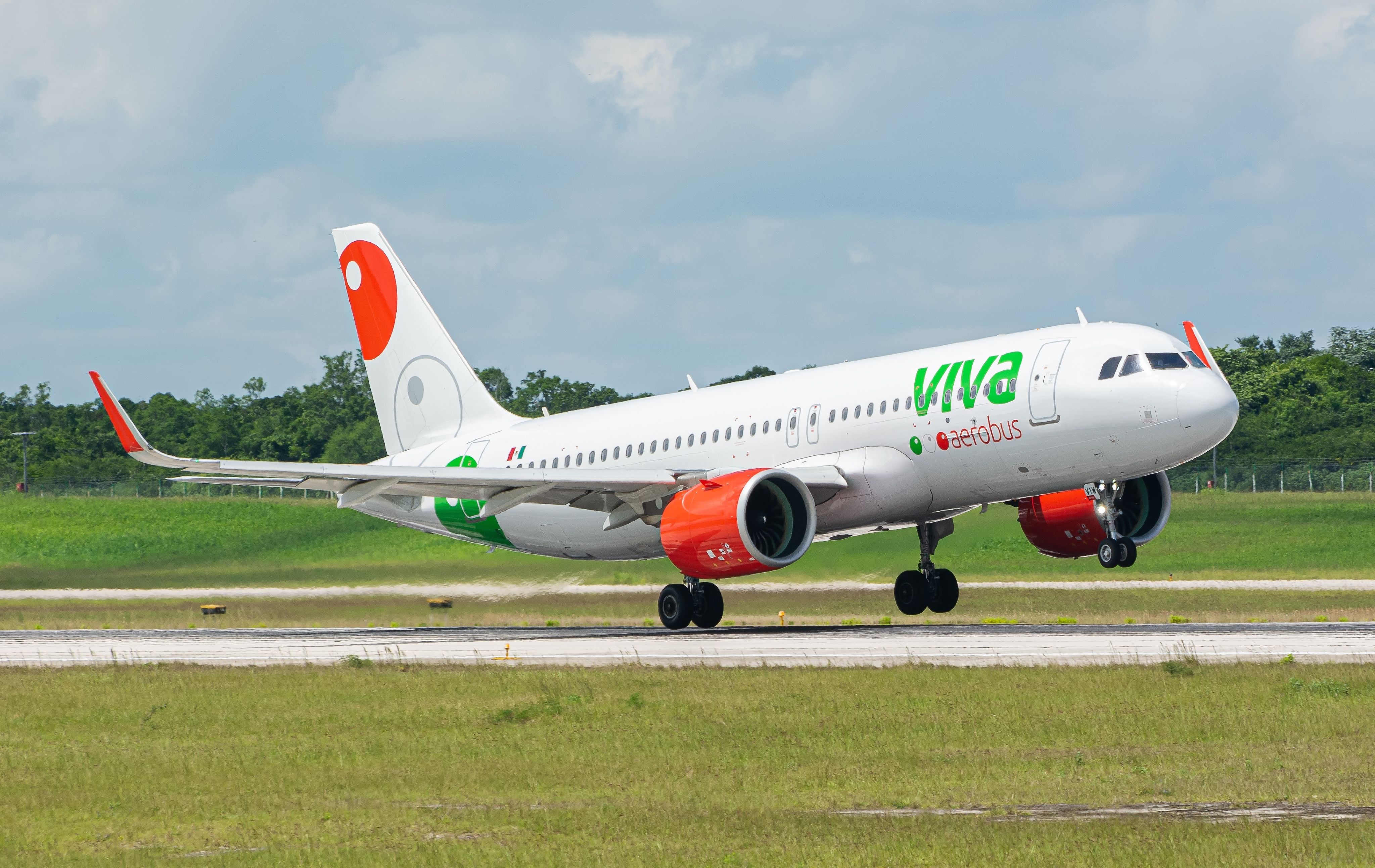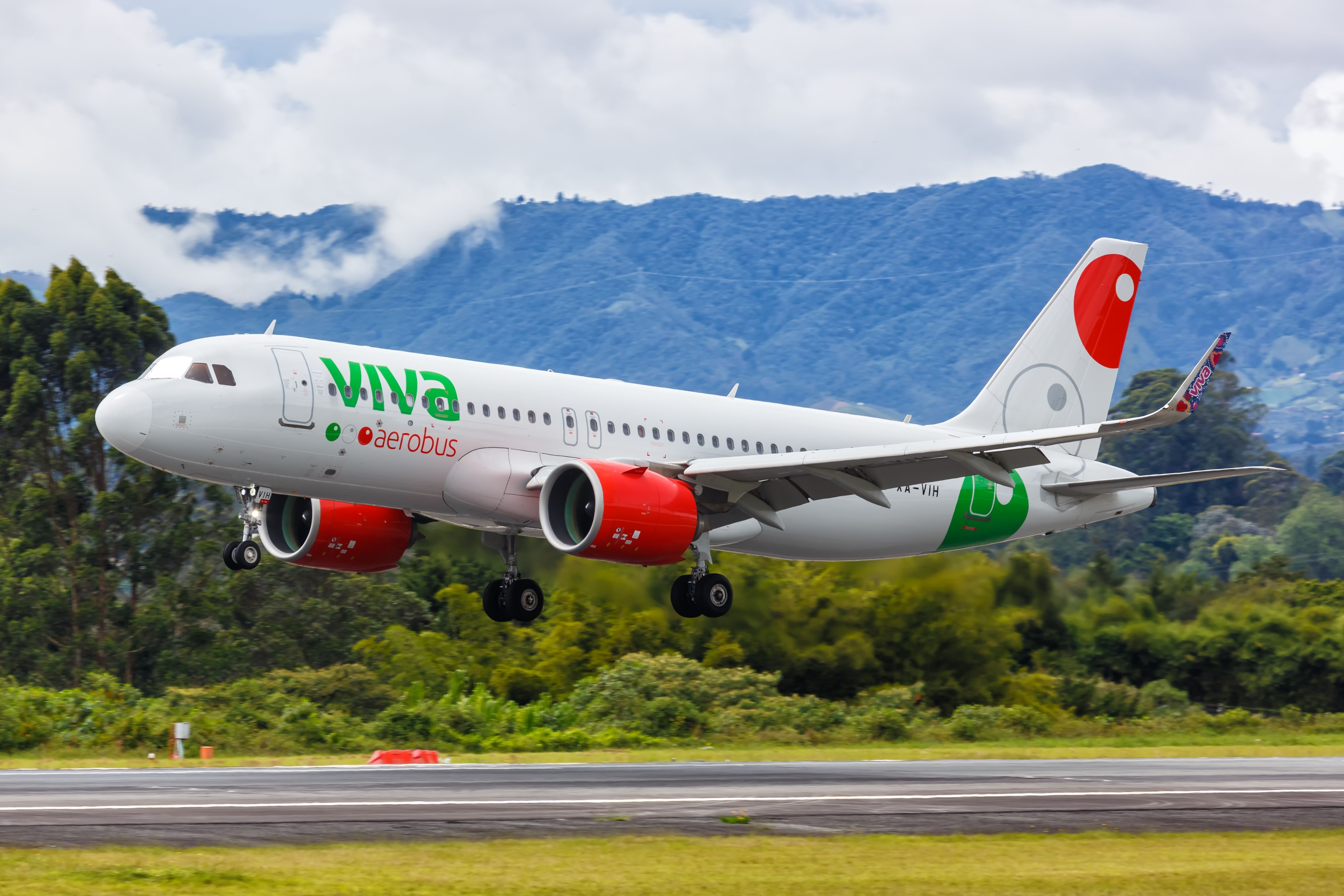The Mexican ultra-low-cost carrier Viva Aerobus began 2023 with a bang, carrying 20.2% more passengers compared to last year when the company set an all-time record in traffic levels.
Starting the year on a high note
On Wednesday, Viva Aerobus released its January traffic results, which showed the Mexican airline carried 1.75 million passengers. That’s a 20.2% growth compared to 2022, fueled by a 22.4% domestic and 4.9% traffic growth, respectively. Viva had 1.5 million domestic and 194,000 international travelers.
Viva Aerobus is one of two Mexican ultra-low-cost airlines. The other one is Volaris, and it also began the year strongly, with a 22% passenger increase. In January, Viva Aerobus had an 83.2% load factor, offering over 2,246 weekly flights in services throughout Mexico but also abroad to the United States, Cuba, and Colombia. The airline has a fleet of Airbus A320-family-based aircraft. When talking about January, Viva Aerobus Chief Executive Officer Juan Carlos Zuazua said,
“In January, we experienced strong demand in our markets, keeping a high demand above the growth of our capacity. Despite this month being in one of our low seasons in Mexico, we were able to reach healthy levels in our load factors. Based on the booking trends, demand remains strong, and that’s a great beginning for the year.”
Will Viva keep 2021 and 2022 growths?
Despite the world facing a crisis following the COVID-19 pandemic, Viva Aerobus managed to grow in 2021 and 2022 versus pre-pandemic traffic levels. In 2021 the airline based in Monterrey International Airport (MTY) reported 15.26 million passengers, growing by 27% versus 2019. One year later, Viva Aerobus reported 20.69 million passengers, a 35.6% growth versus 2021. That kind of growth is unsustainable in the long term, and most likely, the airline will reach a ceiling shortly.
Find the latest South American aviation news here.
Viva Aerobus was able to grow at these rates due to various reasons. One, back in 2020, was the disappearance of Interjet, which left a 15-million passengers market up for grabs. Volaris and Viva Aerobus have been the biggest winners of this. Another reason has been the resilience of the Mexican aviation market. Last year, the North American country led Latin America and the Caribbean in terms of passengers, having over 107 million travelers. It was only behind the US in the continent.
Nonetheless, Viva’s growth will ease at some point. In the meantime, the airline continues to increase the size of its fleet. It currently operates 68 aircraft (according to data from ch-aviation). Viva Aerobus still has unfilled orders with Airbus for 29 Airbus A321neo planes, including one Long Range variant. The Mexican carrier also launched last year its first loyalty program, called Doters, which has been successful so far, reaching over one million users.
In terms of profitability, the airline will release its fourth-quarter results shortly, and we will be able to review if it closed the year with a net profit. Until 2022’s third quarter, Viva had lost $18 million.
Have you traveled with Viva Aerobus? How did you find the experience? Let us know in the comments below.



